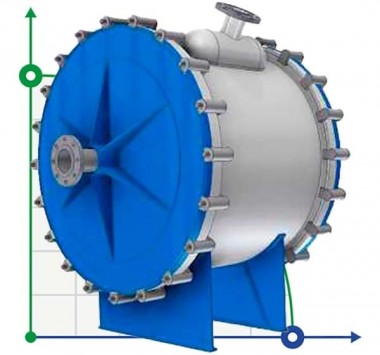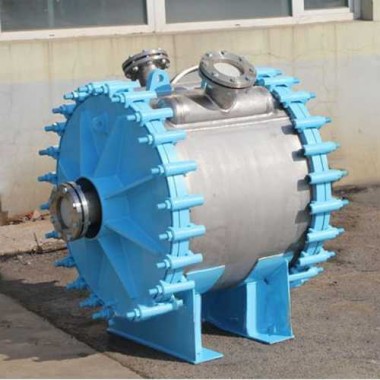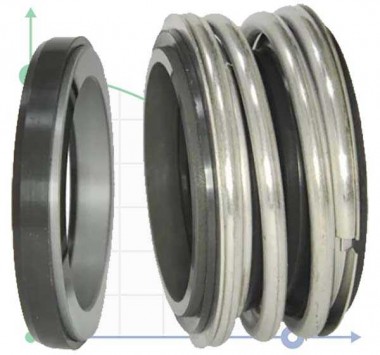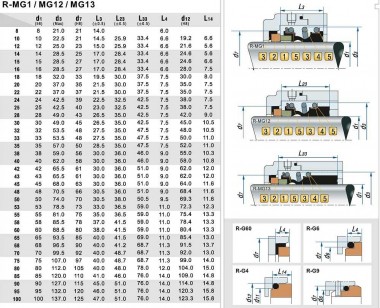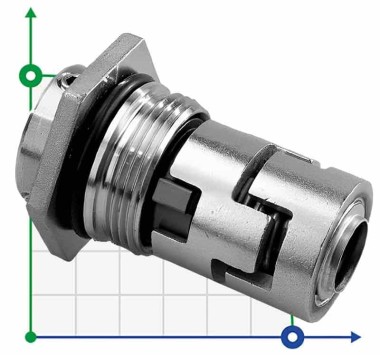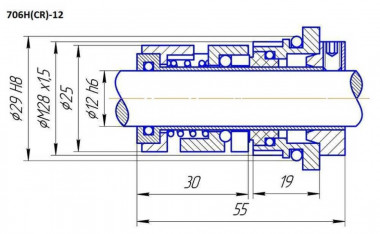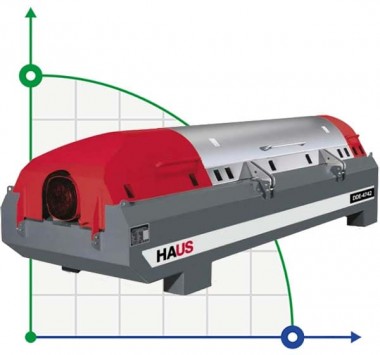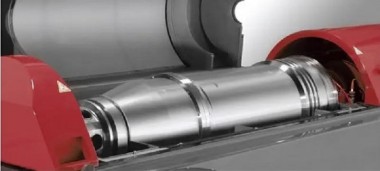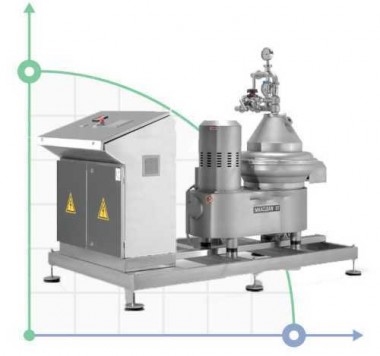Protection of boiler equipment and networks
- Dosing of reagents.
- Dosing of sodium sulfate.
Principles of protection of hot water boiler equipment and networks from internal corrosion and deposits.
The economic and social problems of the life of society in our country force us to reconsider our attitude to the use of natural resources in the communal scheme. Requirements for the economy of fuel, water and other resources determine the search for and transition to new technologies in heat and power engineering.
Centralized heating in Ukraine has existed for over 80 years. During this time, the equipment of heating networks has been improved. Boilers with flame tubes are replacing the boilers and water-tube schemes, the control of heat supply and automation of the operation of boiler houses is improved, the construction and operation of heating networks is improving.
At present, the least reliable link in heat supply systems is heat transport, which is mainly associated with the leakage of the coolant through damaged pipelines of heating networks. The main cause of damage is corrosion damage to the metal. [one].
According to literature data, 50-97% of pipeline damage is the result of external corrosion (Photo 1.)

Photo 1. The result of damage to the heating network as a result of external corrosion.
But, due to the fact that it is often quite difficult to establish the cause of corrosion during inspection, one should not reject the possibility of aggravating the problem of internal corrosion of pipelines, especially since nowadays, pipelines are increasingly being replaced by pre-insulated pipes, which are expected to last 25-30 years of operation. and this is practically the only way to combat external pipe corrosion. Intensification of internal corrosion is most often associated with the presence of deposits on the inner surface of pipes, which mainly include steel corrosion products cemented with calcium and magnesium carbonates.

Photo 2. Deposits in the pipes of the convective part of the TVG-8m boiler

Photo 3. Scale deposits in the pipe of the screen part of the TVG-8m boiler
The calculation of the comparative costs of corrosion and the costs of its prevention (Diagram 1) clearly shows the benefits of introducing chemical deaeration of water.

Diagram 1. Technical and economic calculations.
The diagram shows that losses from corrosion significantly exceed the cost of implementing protection technologies. When calculating, it turned out that the cost of chemical deaeration is much lower than thermal deaeration, therefore, the economic effect from the introduction of technologies for chemical protection of pipelines should be higher from thermal deaeration. In addition, with the help of thermal deaeration, only the problem of protection against oxygen corrosion is solved, but the problem of counteracting deposits is not solved. Another argument in favor of chemical deaeration was that heating networks currently operate at low temperatures (40-60 ° C), which is not enough to carry out the vacuum deaeration process.
From this, after evaluating these factors, our company has chosen the direction to use chemical methods of counteracting corrosion and deposits.
According to the estimates of specialists in municipal energy and independent experts, the wear of equipment of boiler houses and pipelines of heating networks is 80 -85%. That is, all surfaces of boilers and pipelines of heating networks have perennial deposits of various origins. Based on this fact, we assume that the main mechanism of corrosion processes is the formation of galvanic cells for differential aeration. That is, corrosion mainly takes place under a layer of deposits (sub-sludge corrosion), where the oxygen concentration is much lower than in the water of which the pipeline is filled. [2] (Div. Fig. 1, 2).

Photo 1. Simplified diagram of a galvanic element for differential aeration

Photo 2. Diagram of the formation of a differential deaeration element on the steel surface
Thus, the concept of protection against corrosion and deposits was developed, namely:
- In the first place, it is necessary to refine the electroplating elements of the differential aeration;
- In a different way - view old attachments;
- Create a cast on the surface of a clean pipe.
To implement this concept, our enterprise has created several technologies for protecting boiler equipment and pipelines of heating networks from deposits and corrosion. The choice of this or that technology depends, first of all, on the composition of the water, the characteristics of the boilers and the operating modes of the heating network. The technical implementation of technologies for the protection of boiler equipment and pipelines of heating networks can be based on installations developed and manufactured by our enterprise. Installation of chemical deaeration and stabilization water treatment Redox-KM. The Redox-KM chemical deaeration unit successfully competes with all known types of deaerators. The principle of operation is based on the catalytic oxidation of sodium sulfite with oxygen dissolved in water. The dosing of reagents is carried out by Etatron dosing pumps automatically in proportion to the water flow. Today is the Redox-KM installation, which is the Combined modular water treatment plant KMIU-M1.
The installation consists of three main blocks:
- water softening unit,
- block of chemical deaeration of water;
- and block of corrective anti-scale water treatment...
KMIU-M1 combines a set of technologies:
- chemical deaeration;
- scale-free operation of steam and hot water boilers;
- washing off old deposits...
For small boiler houses, reagent water treatment without preliminary softening is possible using a specially selected mixture of reagents, individual for a specific water composition. The process is carried out by dosing stations based on Etatron dosing pumps in a fully automatic mode. When old deposits are washed away, a large amount of secondary sludge is formed, which contaminates heating network pipelines and boilers, especially with flame tubes, in which the water flow rate is significantly reduced. Therefore, it is necessary to remove sludge from the pipelines, for which they are installed with an SMSh dirt separator with automatic sludge removal.







